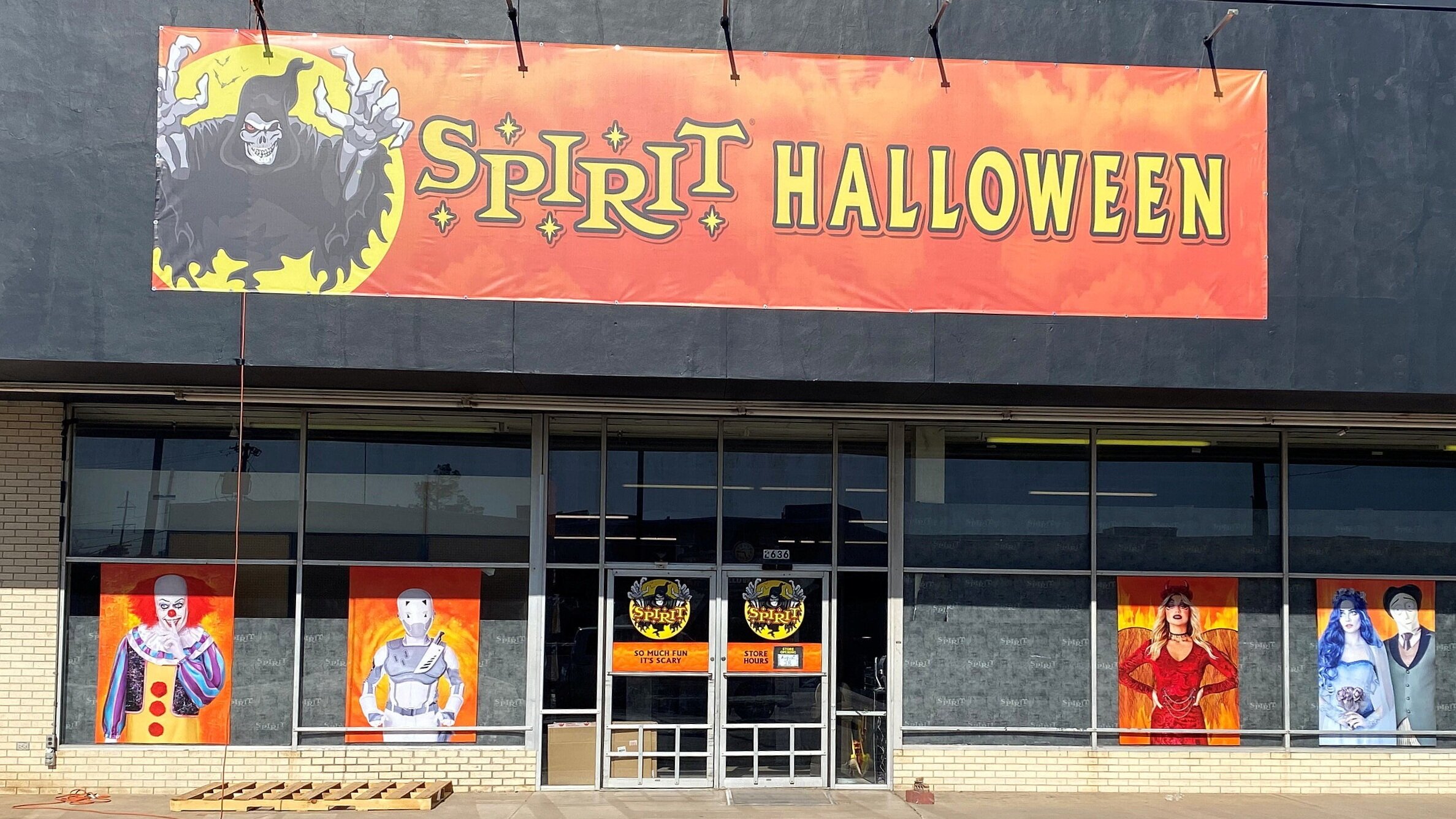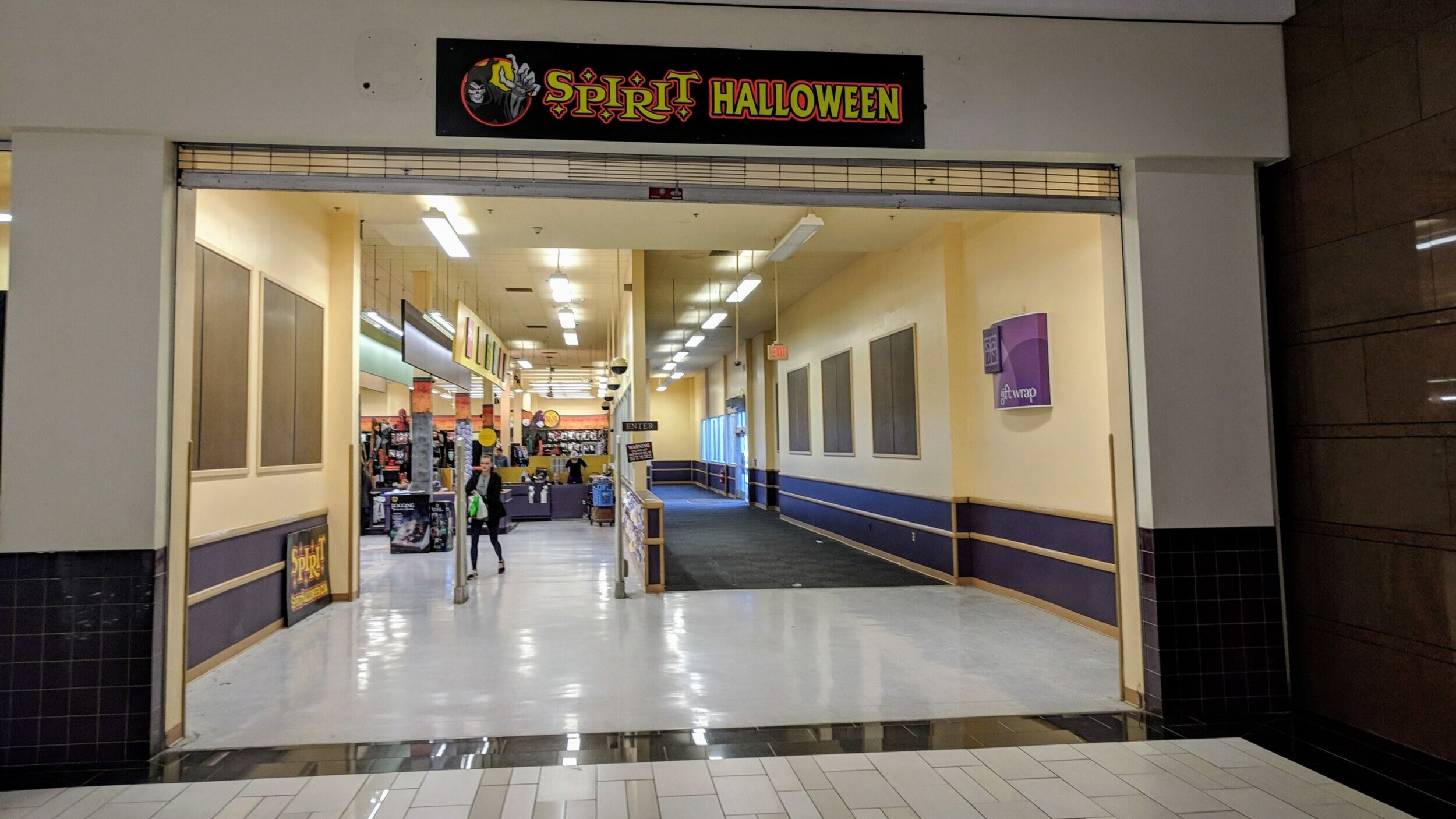Spirit Halloween Fashion Square Mall Directions
About that Spirit Halloween Store You Always See Around This Time of Year...

It's that time of year once again: bags of candy are showing up in the supermarket, pumpkins are appearing on doorsteps and Spirit Halloween banners are popping upward over derelict shopping malls and large box storefronts.
What exactly is upwardly with these Halloween costume stores that make it without fail every fall, only to pack up and leave a couple months later on? I visited the Spirit website and found five different locations in my metro expanse and many more further out of boondocks. They drop down in abandoned malls and empty big box stores, making temporary use of these hulking spaces.
Should nosotros laud the Spirit Halloween as a artistic pop-upwards shop, putting an otherwise empty infinite to amend use, fifty-fifty if only for a couple months?* Or are these stores only a sign of the flawed and fatal nature of the suburban development pattern that gobbles up public and private resources at farthermost rates, only to abandon their new creations to obsolescence within a decade or two?
I think you can probably tell by my tone that I'yard inclined toward the latter, but I'm willing to entertain the first question.
Strong Towns guest contributor, Addison Del Mastro, wrote about the repurposing of suburban buildings and parking lots final month into things like austerity stores and taco truck space. "While I might once have only seen run-down buildings through my windshield and kept on driving, at present I see people doing what they can with what they have," he writes. "Information technology'due south not perfect. […] Merely it's better than abandonment and bane." He has a indicate. I would much rather see an erstwhile Kmart used as a Halloween costume shop, even if it'due south only temporary, than accept that shop go empty in perpetuity, and I'one thousand sure the owners of the building would, too.

Interestingly, Spirit Halloween actually got its start with a model that made much better use of space, according to a New York Times article: A apparel shop owner temporarily turned his clothing store into a Halloween costume shop during the fall months, and and so brought the dresses back out come Nov. Eventually he decided to shift his business concern to completely focus on the costume side of things.
Today'due south Spirit is pretty much a lesser-feeder business organisation that works only at the expense of other stores; if there weren't vacant storefronts, this business concern wouldn't exist. Or, as the Times puts it, "Spirit is merrily feasting on the corpses of its fallen foes."
Of course, there are other "popular-upwardly" uses nosotros all see in our communities from time to fourth dimension that we might be more fond of. Christmas tree lots are a not bad example. They typically announced in a parking lot or vacant lawn in early December, and for a month, that infinite is activated with holiday music, twinkle lights, and the smell of hot cocoa. Seasonal Christmas shops sometimes choice up where the Spirit Halloween shop left off, too, filling a large box store in November and December with light-upward snowmen, shiny ornaments, and plastic Santas. Whole carnivals and flea markets volition gyre into town for a week or two, occupying a parking lot or spacious park. Farmers markets set up shop in a public square on Saturdays from May to September. There'south plenty to similar and capeesh about a temporary shop that provides an opportunity for entrepreneurs to sell their wares and actives an empty space.
Overall, I think a true stiff town would make space for these seasonal uses and welcome them every bit part of the local business mural. At the same time, a strong town wouldn't have countless vacant big box stores and parking lots for a Spirit Halloween to occupy, in the first identify. Possibly seasonal shops could take turns with a rotating storefront downtown; in that location's no reason a single infinite couldn't be a Halloween store from September–October, a Christmas store from November–Dec, and a beach-gear store from May–August. Or perhaps these shops would fill in during temporary vacancies of commercial spaces, between random store tenants.
The bottom line is: We shouldn't be building a globe where it's normal to have dozens of vast empty stores propped up past millions of taxpayer dollars in public infrastructure. We can be happy when these stores are temporarily used (although I don't, personally, observe annihilation peculiarly celebration-worthy about a national company peddling inexpensive goods probably made by poorly-treated foreign workers that likely pays minimum wage to a scattering of U.South.-based temporary store employees, does nothing to build lasting local wealth, so picks up and leaves a month later).
Simply, for our pop-upwards shop inspiration, we should be looking to the hot domestic dog stand operator who might one day invest in his own storefront, or the local farmers who sell their vegetables at the market on Sundays. If you want a strong town, y'all're probably not going to observe information technology inside a Spirit Halloween.
* Credit goes to my colleagues for pitching in their ideas for this article and encouraging me to recollect beyond my pessimism.
You May Also Like
Featured






0 Response to "Spirit Halloween Fashion Square Mall Directions"
Post a Comment